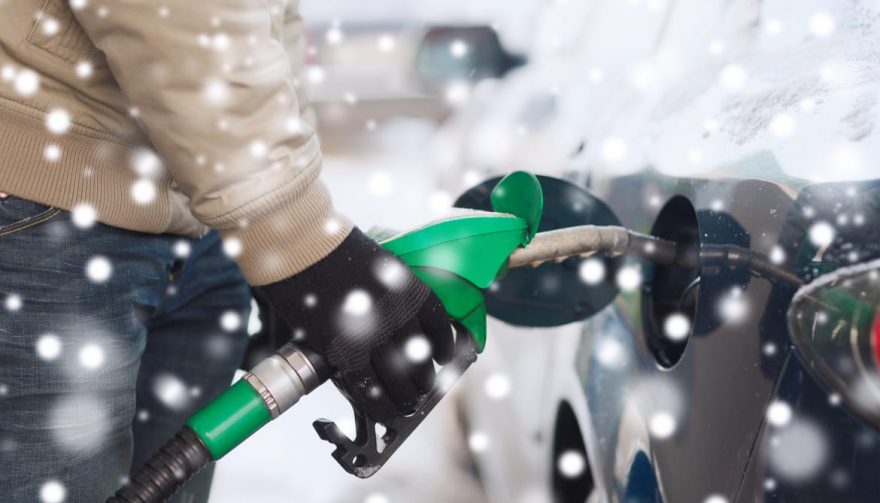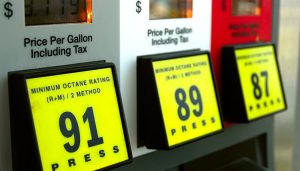
Winter driving takes a toll on your fuel economy
Winter Can Take a Toll on Fuel Economy, Don’t Let It
Have you ever wondered why you get poor gas mileage in winter? According to the EPA, fuel efficiency can drop as much as 22 percent on short trips (less than 3 or 4 miles) when the temperature drops.
If you have a short drive to work, winter weather is costing you money. The same is true if the ride is principally used for dropping the kids off at school, grocery shopping, trips to the gym or fast food runs.
If you are driving short trips during the winter, one of your more frequent destinations will be the gas station. Why do we get poor gas mileage in winter?
How Cold Weather Is Robbing You of Mileage
It’s all about acclimation. Just like it takes time for you to adjust to the freezing temperatures, your vehicle needs to acclimate as well. It’s that time spent acclimating that uses more fuel. Here are a few examples:
- Engine and transmission friction increases because engine oil and other drivetrain fluids are thicker until they reach optimal temperatures.
- It takes longer to reach the temperature required for best performance. This is why the loss of mileage on short trips is markedly higher than longer runs.
- Time spent warming the car up for your own comfort drives down overall efficiency. Idling gets exactly 0 miles per gallon.
- Cold air is denser, increasing drag. That’s an important consideration at freeway speeds. Cold air also decreases tire pressure, creating a bigger footprint and increasing rolling resistance.
These all sound like small matters, but when combined, they equal poor gas mileage in winter.
7 Ways to Avoid Poor Gas Mileage in Winter
So, what can you do? You can’t control the weather, but you can save gas in the winter if you follow a few simple tips.
Use Your Garage
It doesn’t have to be a heated garage. The temperature inside the garage may be cold but it will be warmer than the temperature outside. A warmer car means less time required to get fluids up to optimal operating ranges.
If you don’t have a garage, a decent car cover will cut down on the effect of the wind and eliminate accumulation of ice and snow on the vehicle. By the time you’re done struggling to get the cover off you’ll be nice and warm as well. An added benefit of sorts.
Don’t Over Do the Remote Start
If you have a newer car with that really convenient “remote start” feature, don’t use it from inside the house and then wait a few minutes for the cabin to get nice and toasty before going out. Most manufacturers suggest an idling time of no more than 30 seconds and then “gently” driving off. Use the seat warmer rather than the heater initially to minimize “get warm” time.
Check the Tire Pressure
Check your tire pressure frequently. AAA says that 80 percent of all tires are under-inflated at any given time costing millions of gallons of gas. It only gets worse in cold weather.
Lighten the Load
Get rid of stuff you don’t need in the trunk. If you spent the weekend skiing or camping (are you out of your mind?) or ice fishing, be sure to remove all of your gear when you get home. Buick did a study that says every extra 250 pounds reduces fuel efficiency by 2 percent.
Keep the Roof Clean
Aside from knocking all that snow off your roof before you drive, get all the other unnecessary items off, like rooftop carriers for your winter gear. They affect drag drastically.
Consumer Reports tested a Honda Accord that, under normal configuration, got 42 mpg. They mounted a two-bike carrier on the roof and mileage dropped an astounding 15 mpg.
Related to the bald roof, take down any flags you fly from your windows or truck beds if you want to save gas. Try a bumper sticker instead.
Adaptive Cruise Control
This goes for warm weather, not just winter driving. If you have adaptive cruise control use it. Commuter traffic can be stop and go and the technology behind adaptive cruise control will brake and accelerate far smoother than most humans. Rapid braking and acceleration burns up fuel unnecessarily. Besides, you paid for that cool piece of tech, use it.
Automatic Transmissions
If you are in the market for a new car, consider the automatic transmission options that are available. This holds true in the winter or warmer weather too. As a rule, the more gears you have the better mileage you are going to get. For example, the new 10 speed transmission on a 2018 Mustang GT gets a combined mileage of 19 mpg compared to a 2017 model with a 10 speed (17 mpg) despite having 25 more horsepower.
The good news is winter will be over in a few short months and you can start losing mileage waiting for the AC to fully kick in and running on underinflated tires. In the meantime, you can trim your fuel bill by a few bucks by simply following these commonsense tips.
Of course as a last ditch solution, you could move to Southwest Florida. Wait a minute. I live there. We don’t need any more Snowbirds. I hear Phoenix and San Diego are both nice all year round.





